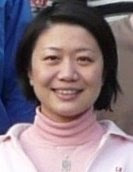The
PerCom work-in-progress session will be held at the 7th IEEE International Conference on Pervasive Computing and Communications (PerCom 2009) in Galveston, Texas, March 9-13, 2009. It aims to present and discuss emerging results, and novel research questions, approaches, and directions in the research area of pervasive computing with the paradigm that information systems at anytime anywhere.
Topics include, but are not limited to:
* Pervasive Computing and communication architectures
* Intelligent environments
* Service composition and application adaptation
* Smart devices and smart spaces
* Middleware services
* Mobile/Wireless computing systems and services
* Context aware computing
* Autonomic computing and communications
* Programming paradigms for pervasive systems
* User interfaces and interaction models
* End user programming and end user tools
* Mobile/Wireless service management and delivery
* Resource management in pervasive computing
* Trust, security and privacy issues
* Sensor networks and applications
* Pervasive service oriented architectures
Submission Deadline: November 2, 2008
















